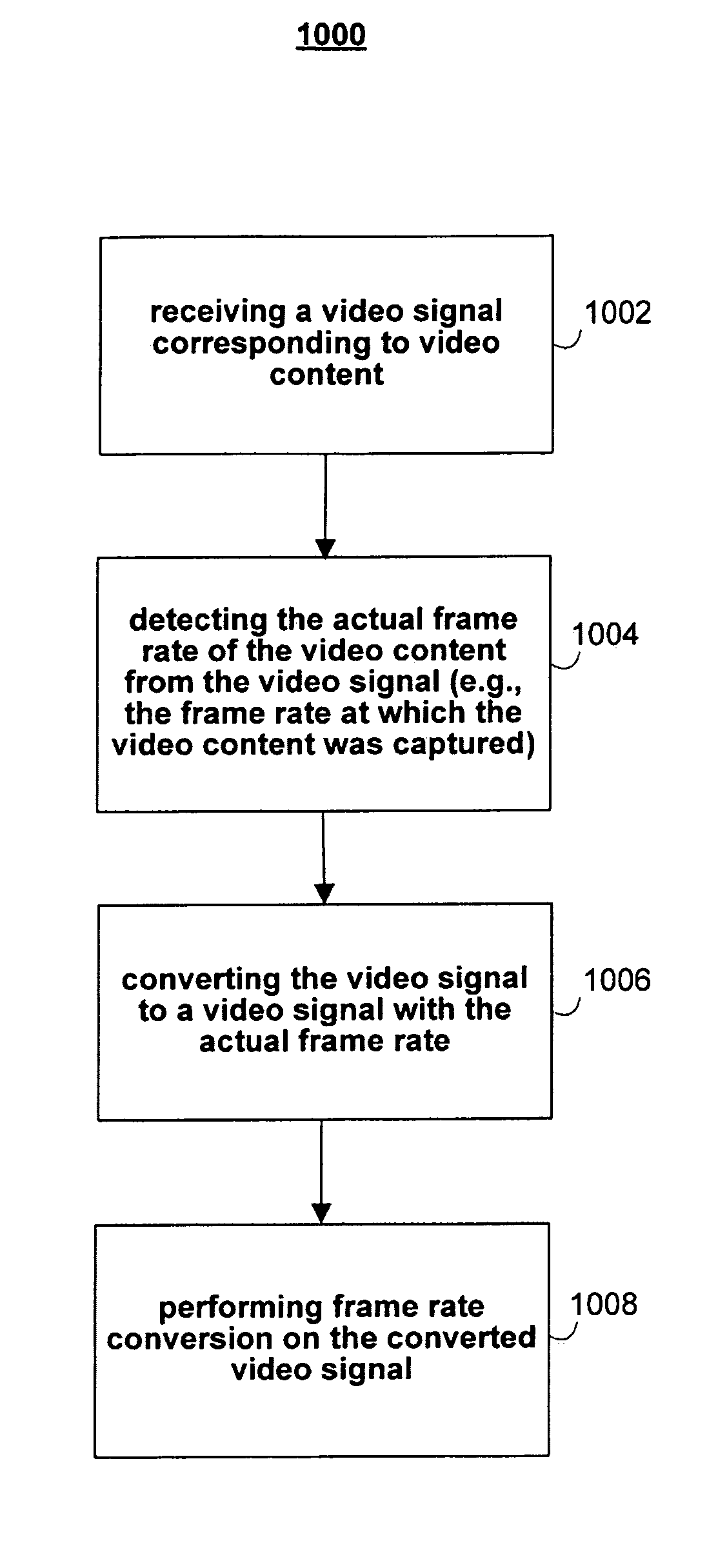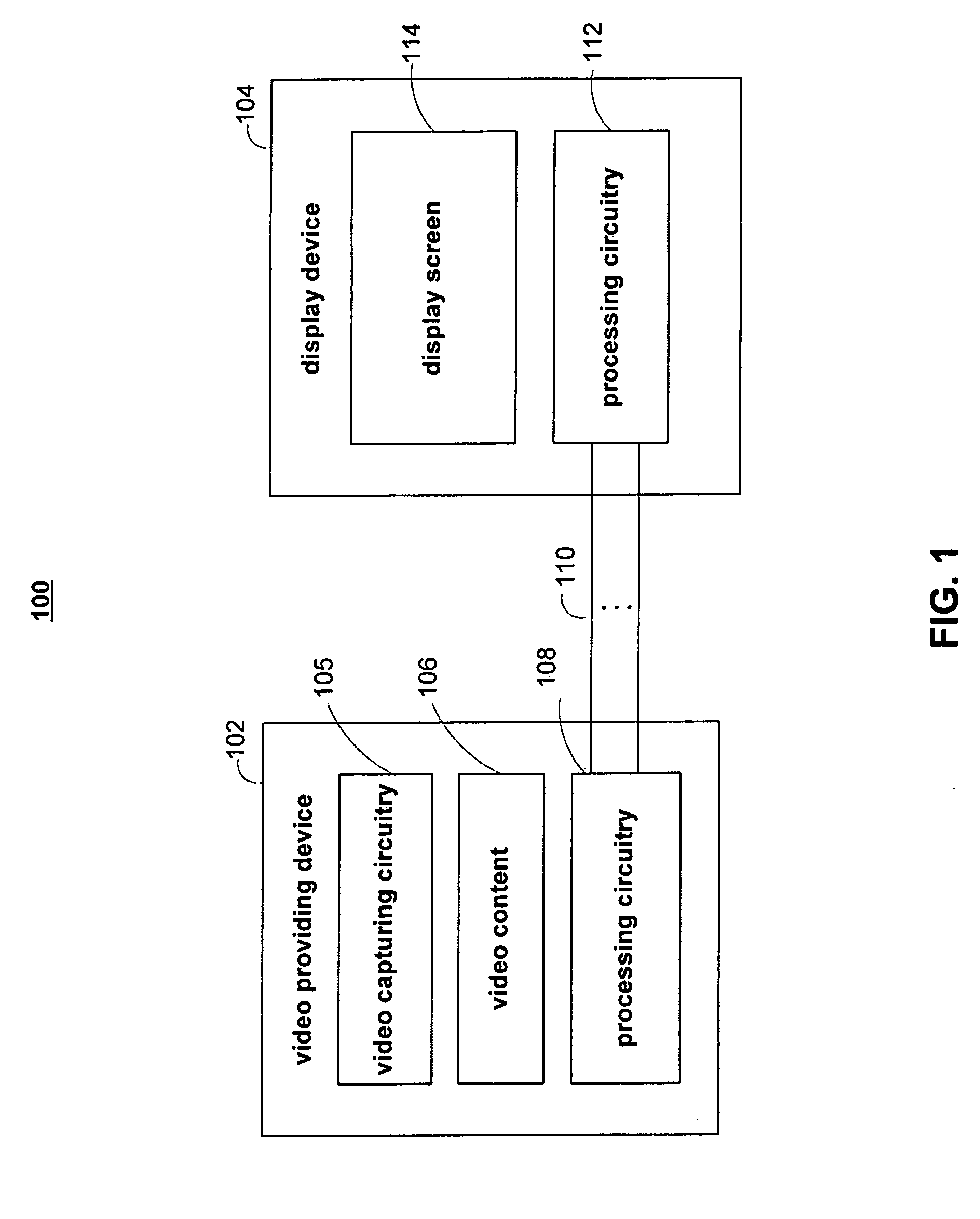Methods and systems for improving low resolution and low frame rate video
a low frame rate and video technology, applied in the field of electronic devices, can solve the problem of relative little video data remaining, and achieve the effect of improving the visual appearance of low-resolution and/or low frame rate video
- Summary
- Abstract
- Description
- Claims
- Application Information
AI Technical Summary
Benefits of technology
Problems solved by technology
Method used
Image
Examples
Embodiment Construction
[0043]FIG. 1 shows illustrative system 100 for providing video content to a display device. Display device 104 in system 100 may be a television or any other device that can display video. Video content 106 may be provided for display on display device 104 by video providing device 102. Video providing device 102 may be a portable media player, a DVD player, a set top box, or any other suitable device that may provide video.
[0044]Video content 106 may be captured by the video providing device. Video providing device 102 may include video capturing circuitry 105 for capturing and encoding videos. To generate a video, video capturing circuitry 105 may capture successive images at predetermined time intervals (e.g., every 33 millisecond). Thus, the video capturing circuitry may encode the captured frames in real time using intra-frame and / or inter-frame encoding techniques. The time intervals of the successive images may correspond to the frame rate of the corresponding video that vide...
PUM
| Property | Measurement | Unit |
|---|---|---|
| time | aaaaa | aaaaa |
| time | aaaaa | aaaaa |
| time | aaaaa | aaaaa |
Abstract
Description
Claims
Application Information
 Login to View More
Login to View More - R&D
- Intellectual Property
- Life Sciences
- Materials
- Tech Scout
- Unparalleled Data Quality
- Higher Quality Content
- 60% Fewer Hallucinations
Browse by: Latest US Patents, China's latest patents, Technical Efficacy Thesaurus, Application Domain, Technology Topic, Popular Technical Reports.
© 2025 PatSnap. All rights reserved.Legal|Privacy policy|Modern Slavery Act Transparency Statement|Sitemap|About US| Contact US: help@patsnap.com



